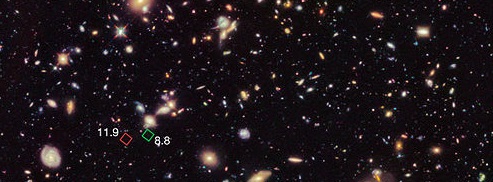The first conference I attended as a PhD student was held at a postcard-perfect alpine château up in the Canadian Rockies. The organisers had brought together particle physics, the physics of the very smallest things we can detect, with cosmology, the physics of the entire universe. These two bodies of knowledge both become important in the very early stages of the universe, when everything we can see in the night sky, even the most distant objects visible only with our most powerful telescopes, was compressed into an unimaginably tiny volume.
The talks would start early in the morning and run through until midday, when the participants would disperse to ski at the local resort, or to go skating on a frozen lake that was overlooked by the château. While physicists often style themselves as accomplished outdoor types, the reality is that they spend too much time at their desks or in the lab – by the end of the week the hotel had run out of crutches and knee braces. Every afternoon, after the rescue teams had retrieved our fallen, we would reconvene for talks and discussions that would continue long into the night.
The hot topic of the week was the two competing measurements of the rate at which the universe was expanding. This is a crucial thing to know if you want to know the age of the universe, and if and when it might end. There were two different research groups at the conference each claiming to have made the first reliable measurement of this rate. The discussion was running hot because the measurement of one group was almost twice that of the other.
The fate of the universe quite literally depended on who was right. To an outside observer, each group seemed supremely confident in their own measurement and equally confident that the other group had made a mistake. Someone was wrong.
Today, we know that both groups were equally mistaken. Over the next few years, each group refined their measurements to bolster their case. As new data was collected and analysed, the two measurements started to creep closer together. A few years later they met in the middle.
Science doesn’t always result in compromises like this, but when science works well, it often does so via a mix of competition and cooperation.
From a certain perspective competition between teams of researchers might seem wasteful. Why fund two research groups to make the same measurement? But in this case, the existence of a competing group eliminated any complacency that might have set in. The overconfidence of each team in their own approach was tempered by their rivalry with the other group.
The cooperation is less explicit in the narrative, but was nonetheless crucial. The teams cooperated by openly sharing their results and methods in an effort to persuade the rest of the research community that they had the right answer.
New Zealand has experimented over the years with mechanisms for driving cooperation and competition in our research system, yet we still seem to be incapable of striking the right balance. The National Science Challenges eliminated competition altogether, or at least banished it behind closed doors, and led many to conclude that they had been captured by an old boys’ network.
In my opinion, the Centres of Research Excellence have struck the right balance. They are selected through a highly competitive process, yet one which encourages large teams of researchers to come together and create something greater than the sum of its parts. And in the 2014 round we saw that incumbency was no guarantee of success. Only two of the existing CoREs were selected for further funding and four new entrants were given their chance, including Te Pūnaha Matatini.
We now need to ensure that the other side of the ledger is balanced: openness, sharing of best practice, and collaboration between the CoREs will ensure that science emerges as the winner in the long run.

